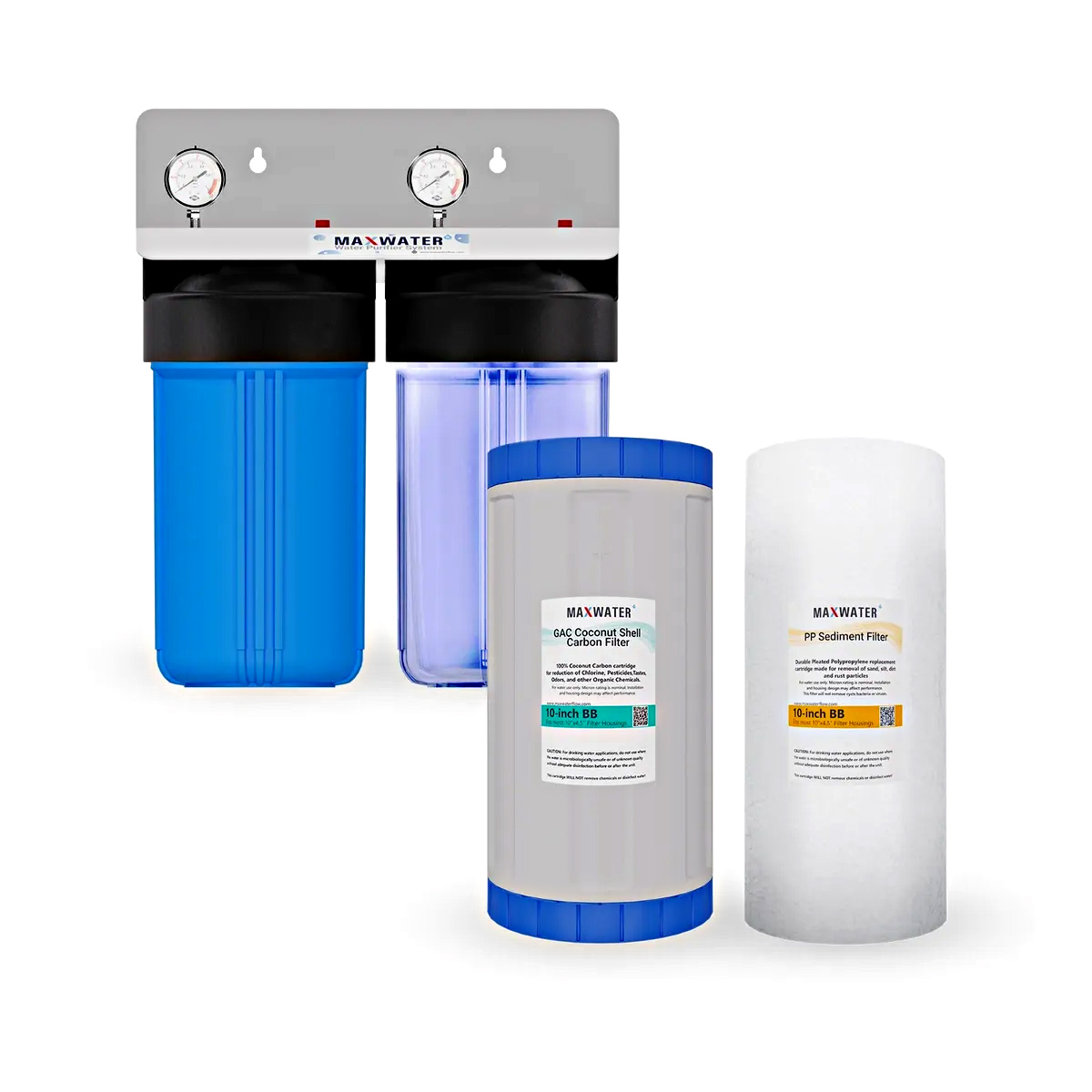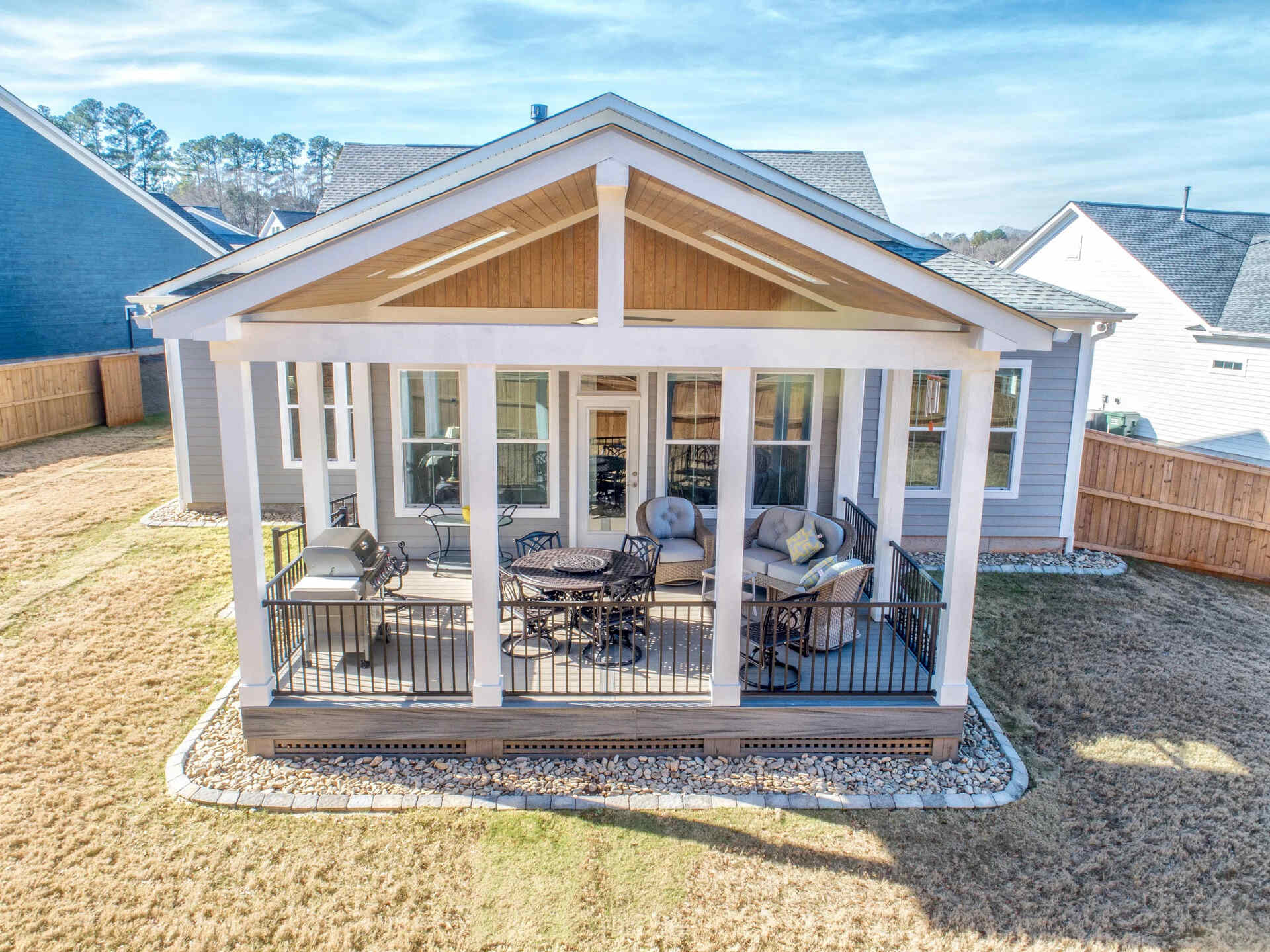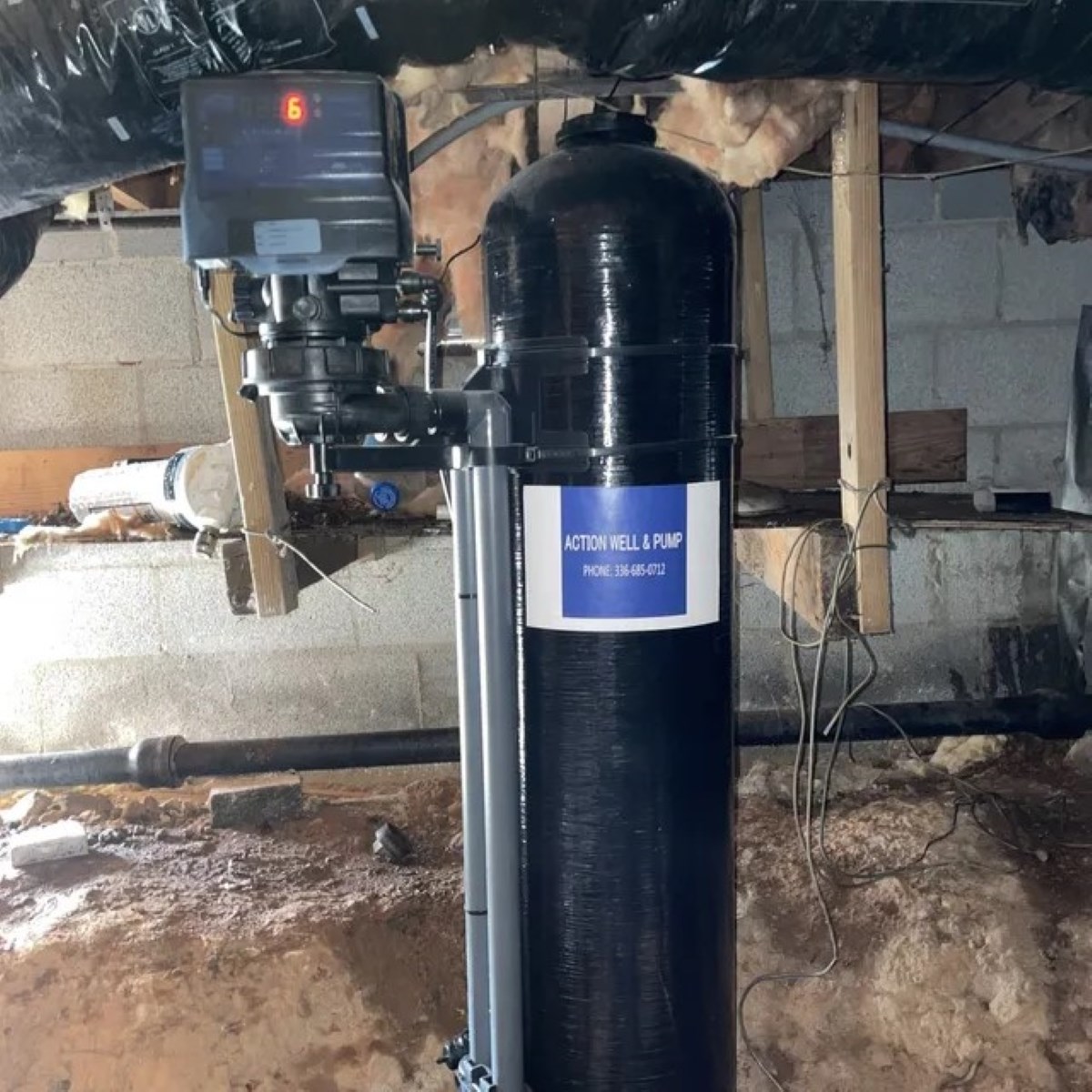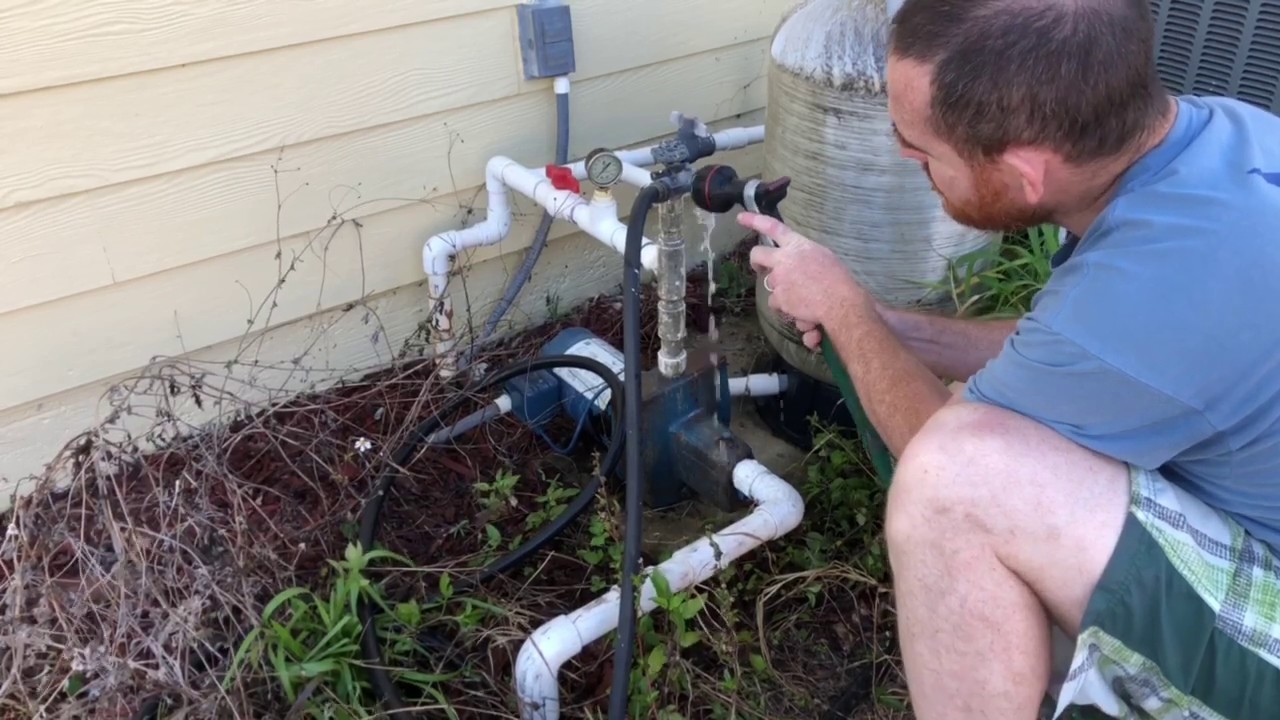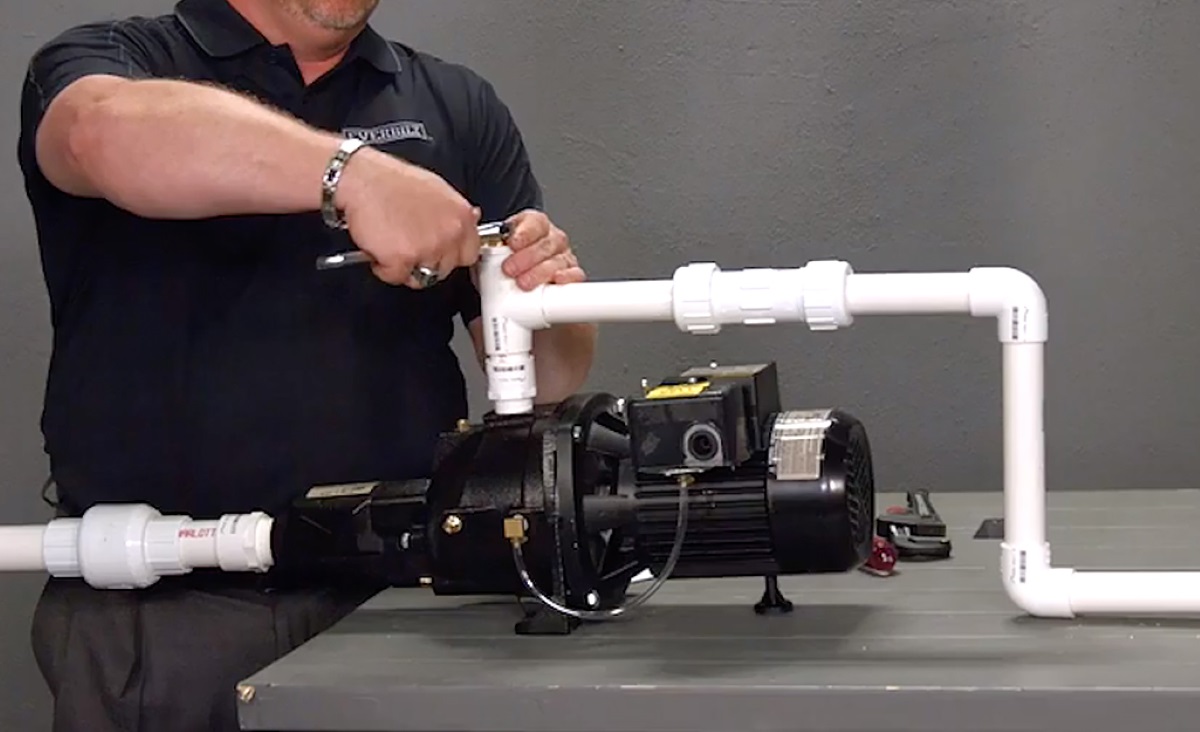Home>diy>Architecture & Design>How To Design A Well-Ventilated House
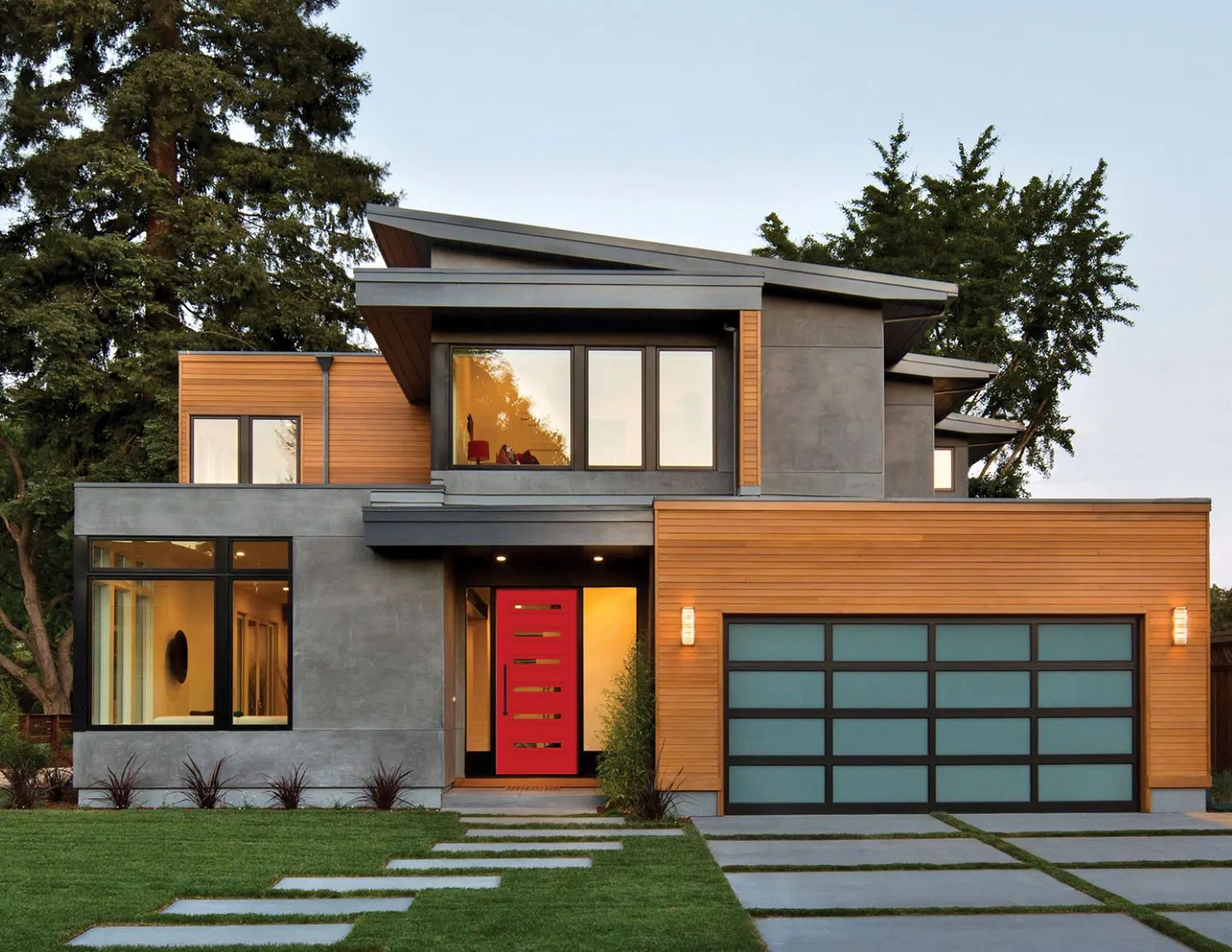

Architecture & Design
How To Design A Well-Ventilated House
Modified: January 9, 2024
Design an architecture that promotes easy cooling in your house with our helpful tips and techniques. Create a comfortable and energy-efficient space through strategic design choices.
(Many of the links in this article redirect to a specific reviewed product. Your purchase of these products through affiliate links helps to generate commission for Storables.com, at no extra cost. Learn more)
Introduction
When it comes to designing a house, there are many factors to consider. From the layout and aesthetics to the functionality and comfort, every aspect plays a crucial role in creating a home that meets your needs and preferences. One of the essential considerations in house design, especially in warmer climates, is creating a space that is easy to cool.
The cooling of a house is not just a matter of comfort but also plays a significant role in energy efficiency and cost savings. Inefficient cooling systems can lead to high energy bills and unnecessary strain on the environment. By strategically designing your house to be easily cooled, you can create a more comfortable living environment while minimizing energy consumption.
This article will explore various techniques and strategies to design a house that is easy to cool. From analyzing the location and orientation to maximizing natural ventilation, choosing the right insulation, installing energy-efficient windows, utilizing shading techniques, and optimizing the roof design, we will cover all the essential aspects of house design for efficient cooling.
Additionally, we will delve into the importance of using efficient air conditioning systems and incorporating smart home technology for cooling purposes. By implementing these approaches, you can create a more sustainable and comfortable living space that will benefit both you and the environment.
So, if you’re ready to learn how to design a house that is easy to cool, let’s dive in and explore the fascinating world of architecture and design!
Key Takeaways:
- Designing a house for easy cooling involves strategic location analysis, natural ventilation maximization, and efficient insulation and shading techniques. Incorporating smart home technology further enhances energy efficiency and personalized comfort.
- By prioritizing easy cooling in house design, you can create a sustainable, comfortable living space that minimizes energy consumption and maximizes natural cooling. From insulation to smart technology, every aspect contributes to a cooler, more efficient home.
Importance of Designing a House for Easy Cooling
Designing a house for easy cooling is not just a matter of personal comfort; it is also crucial for energy efficiency and cost savings. With rising temperatures and increasing energy demands, it’s more important than ever to design homes that can stay cool without excessive reliance on energy-intensive cooling systems. Here are a few key reasons why designing a house for easy cooling is so important:
- Increased Comfort: Living in a house that stays cool during hot weather can significantly improve your comfort and well-being. By incorporating cooling design elements, you can create a space that offers relief from the heat, allowing you to relax, sleep, and carry out daily activities comfortably.
- Energy Efficiency: Designing a house with cooling in mind can lead to improved energy efficiency. By implementing strategies such as insulation, natural ventilation, and shading techniques, you can reduce the need for artificial cooling methods, resulting in lower energy consumption and reduced utility bills.
- Environmental Impact: Cooling a house using traditional air conditioning systems contributes to carbon emissions and environmental degradation. By designing a house that naturally stays cool, you can minimize the reliance on these systems and reduce your carbon footprint, contributing to a more sustainable future.
- Cost Savings: Using energy-efficient cooling strategies can lead to significant cost savings over time. By reducing the energy consumption required for cooling, you can save on electricity bills and allocate your financial resources to other important aspects of homeownership.
Moreover, designing a house for easy cooling allows you to take advantage of natural resources such as sunlight, wind, and cool air to maintain a comfortable indoor temperature. By maximizing the utilization of these resources, you can minimize the need for energy-intensive cooling systems and create a more sustainable living space.
Overall, designing a house for easy cooling is a win-win situation. It enhances your comfort, reduces energy consumption and costs, minimizes environmental impact, and promotes sustainable living. So, let’s explore some key elements of house design that can help achieve optimal cooling efficiency.
Analyzing the Location and Orientation
When designing a house for easy cooling, one of the first considerations is the location and orientation of the building. Analyzing these factors can help maximize natural cooling and minimize the need for artificial cooling systems. Here’s why it’s important to assess the location and orientation of your house:
- Sun Exposure: The sun’s position throughout the day has a significant impact on the temperature inside your house. By understanding the path of the sun in your location, you can determine which areas of your house will receive the most sunlight and heat. This information allows you to strategize cooling techniques, such as shading and window placement, to minimize the heat gain.
- Prevailing Winds: Understanding the direction of prevailing winds in your area can help you maximize natural ventilation. By strategically placing windows, doors, and ventilation openings, you can take advantage of cross-ventilation to circulate cool air throughout your house. This reduces the need for artificial cooling systems and improves indoor air quality.
- Landscaping: The surrounding landscape can impact the temperature inside your house. By studying the natural features, such as trees and vegetation, you can determine how they will provide shade and help cool the surroundings. Additionally, considering the hardscape elements, such as pavement and concrete, can help minimize heat absorption and reflection.
- Climate Considerations: Analyzing the climate in your area is essential for designing a house that stays cool. Different climates require different cooling strategies. For example, in hot and dry climates, evaporative cooling techniques may be more effective, while in humid climates, dehumidification and air circulation may be prioritized.
Once you have gathered information on the location and orientation of your house, you can optimize the design to enhance natural cooling. Some design considerations include:
- Placing windows strategically to capture breezes and allow for cross-ventilation.
- Using overhangs, awnings, or trellises to provide shade and block direct sunlight.
- Adding landscape elements, such as trees and shrubs, to provide shade and create a cooler microclimate around the house.
- Incorporating reflective materials on the roof and walls to reduce heat absorption.
By analyzing the location and orientation of your house and implementing appropriate design strategies, you can significantly improve its natural cooling capabilities. This reduces the reliance on artificial cooling systems and promotes sustainable and energy-efficient living.
Maximizing Natural Ventilation
When designing a house for easy cooling, maximizing natural ventilation is a key aspect to consider. Natural ventilation utilizes the movement of air to cool the indoor spaces, reducing the need for artificial cooling. Here are some effective strategies to maximize natural ventilation in your house:
- Window Placement: Positioning windows strategically can facilitate the flow of fresh air into your house. Consider placing windows on opposite walls to encourage cross-ventilation, allowing cool air to enter from one side and warm air to exit from the other. Additionally, installing operable windows that can be opened fully or partially allows you to control the airflow as needed.
- Ventilation Openings: In addition to windows, incorporating ventilation openings such as louvers, vents, or skylights can enhance natural airflow. These openings can be strategically positioned to capture prevailing winds and create a draft effect, improving air circulation throughout the house.
- Atriums and Courtyards: Incorporating atriums or central courtyards in your house design can act as natural ventilation shafts. These open spaces allow for the stacking effect, where warm air rises and exits through high-level openings, drawing in cooler air from the surrounding areas.
- Cross-ventilated Layout: A well-designed house layout with an open floor plan facilitates natural ventilation. By strategically placing rooms and corridors, you can create a flow path for air to move freely through the house, maximizing the cooling effect. Avoid obstructing airflow with unnecessary walls or partitions.
Additionally, it’s crucial to consider the design of the building envelope to improve natural ventilation:
- Proper Insulation: Insulating the house envelope effectively helps regulate indoor temperatures. Insulation prevents excessive heat gain or loss, reducing the need for artificial cooling or heating. This ensures that the air flowing through the house remains at a comfortable temperature.
- Operable Ventilation Devices: Installing operable ventilation devices, such as casement windows, skylights, or ventilation fans, allows you to control and direct the airflow as needed. These devices can be particularly useful in areas where natural ventilation may be limited.
By maximizing natural ventilation, you can create a constant flow of fresh air in your house, reducing the reliance on mechanical cooling systems. Not only does this save energy and lower utility bills, but it also promotes a healthier indoor environment by improving air quality and reducing the potential for humidity and mold-related issues.
So, when designing your house, make sure to consider the placement of windows, incorporate ventilation openings, utilize atriums or courtyards, and create a cross-ventilated layout. These strategies will help you maximize natural ventilation and create a cool and comfortable living space.
Choosing the Right Insulation
When designing a house for easy cooling, choosing the right insulation is a crucial step. Insulation acts as a barrier, preventing heat transfer through the walls, roof, and floors of your house. This helps maintain a comfortable temperature indoors and reduces the need for excessive artificial cooling. Here are some factors to consider when selecting insulation for your house:
- R-Value: The R-value of insulation measures its thermal resistance. A higher R-value signifies better insulation performance. It is important to choose insulation with an appropriate R-value for your climate and the specific area of the house. Insulation with a higher R-value will provide better protection against heat transfer.
- Material: Insulation materials come in various forms, including fiberglass, cellulose, foam, and reflective insulation. Each material has its own set of advantages and disadvantages. Fiberglass insulation is a common choice due to its affordability and effectiveness. Cellulose insulation is made from recycled materials and has excellent thermal and sound insulation properties. Foam insulation provides superior insulation but can be more expensive. Reflective insulation is effective in hot climates, reflecting radiant heat away from the house.
- Installation: Proper installation of insulation is crucial to ensure its effectiveness. It is important to hire qualified professionals or follow installation guidelines carefully if you plan to install insulation yourself. Improperly installed insulation can lead to gaps and voids, reducing its performance and compromising the cooling efficiency of your house.
- Air Sealing: In addition to insulation, air sealing is essential to create an effective thermal barrier. Air leaks can significantly impact the performance of insulation by allowing hot air to enter and cool air to escape. Seal any gaps, cracks, and joints in the building envelope to prevent these air leaks and maximize the insulation’s effectiveness.
When choosing insulation for different parts of your house, consider their specific requirements:
- Attic Insulation: The attic is a primary area for heat gain during hot weather. Insulating the attic can significantly reduce this heat gain and prevent it from spreading to the rest of the house. Use insulation with a high R-value and consider insulating the attic floor as well as the roof.
- Wall Insulation: Insulating exterior walls can prevent heat transfer from outside to inside. Depending on the construction of your house, you may choose to insulate the walls from the inside or outside. The choice of insulation material will depend on factors such as space availability and budget.
- Floor Insulation: Insulating floors that are above unconditioned spaces, such as a crawl space, can prevent heat transfer. This is particularly important if you have rooms built over garages or unheated basements. Use insulation with an appropriate R-value for the specific floor construction.
By choosing the right insulation and ensuring proper installation, you can create a well-insulated house that is easy to cool. Insulation not only helps maintain a comfortable temperature indoors but also reduces energy consumption and lowers utility bills. It is a worthwhile investment that contributes to a more sustainable and energy-efficient living environment.
Read more: How To Connect A Porch Roof To House
Installing Energy-Efficient Windows
When designing a house for easy cooling, installing energy-efficient windows is a crucial consideration. Windows play a significant role in heat gain and loss, as they allow sunlight to enter and can contribute to drafts. By choosing and installing energy-efficient windows, you can effectively control heat transfer, enhance comfort, and reduce the need for artificial cooling. Here are some key factors to consider when selecting and installing energy-efficient windows:
- Window Frame Materials: Different window frame materials have varying levels of thermal conductivity and energy efficiency. Common options include wood, vinyl, fiberglass, and aluminum. Wood frames provide good insulation but may require regular maintenance. Vinyl frames offer excellent energy efficiency and require low maintenance. Fiberglass frames are durable and energy-efficient. Aluminum frames, although lightweight and affordable, have poor insulation properties, making them less suitable for hot climates.
- Glass Type: The type of glass used in your windows can significantly impact their energy efficiency. Double-pane or triple-pane windows with low-emissivity (low-E) coatings can effectively reduce heat transfer and block UV rays. Additionally, gas-filled window panes, such as argon or krypton, provide better insulation by reducing heat conduction. Consider the climate in your area when selecting the appropriate glass type.
- Solar Heat Gain Coefficient (SHGC): The SHGC measures the amount of solar heat that enters your house through the windows. A lower SHGC value indicates better heat resistance. In hot climates, choose windows with a low SHGC to minimize heat gain while still allowing natural light to enter.
- Window Orientation: The orientation of your windows affects the amount of direct sunlight they receive. South-facing windows receive more direct sunlight in the northern hemisphere, while north-facing windows receive less. Consider the sun exposure in different parts of your house and adjust the window specifications accordingly. Installing shading devices like awnings, overhangs, or blinds can also help control heat gain without sacrificing natural light.
- Proper Installation: Even the most energy-efficient windows will not perform optimally if not installed properly. It is important to hire experienced professionals or follow installation guidelines diligently. Proper installation ensures that the windows are airtight, minimizing air leaks and maximizing their energy efficiency.
Incorporating energy-efficient windows can have several benefits for your house’s cooling efficiency:
- Reduced Heat Transfer: Energy-efficient windows with low-E coatings and multiple panes help minimize heat transfer, keeping the indoor temperature cooler in hot weather.
- Better Insulation: The right window frame materials and glass types offer enhanced insulation, preventing drafts and reducing energy loss.
- Lower Energy Consumption: By reducing heat gain and loss, energy-efficient windows can lower the reliance on artificial cooling systems, resulting in reduced energy consumption and lower utility bills.
- Improved Comfort: Energy-efficient windows help maintain a more consistent and comfortable indoor temperature, enhancing your overall comfort.
When designing your house, make sure to carefully select energy-efficient windows, taking into account frame materials, glass type, SHGC values, window orientation, and proper installation. These considerations will help create a more sustainable and energy-efficient living space that is easy to cool.
Consider incorporating passive cooling techniques such as strategic window placement for cross ventilation, using light-colored roofing materials to reflect heat, and adding insulation to keep the house cool.
Utilizing Shading Techniques
When designing a house for easy cooling, utilizing shading techniques is a highly effective strategy. Shading helps block direct sunlight, reducing heat gain through windows, walls, and roofs. By incorporating shading elements into your house design, you can create a more comfortable and energy-efficient living space. Here are some key shading techniques to consider:
- Overhangs and Awnings: Installing overhangs or awnings above windows can provide shade and block direct sunlight during the hottest parts of the day. These extensions can be designed to allow winter sun to enter while preventing excessive heat gain during summer months.
- Exterior Shades and Blinds: Exterior shades or blinds can be mounted on the outside of windows to block sunlight and reduce heat transfer. They can be manually operated or automated for convenience.
- Vegetation and Landscaping: Strategically planting trees, shrubs, or vines around your house can provide natural shading and create a cooler microclimate. Deciduous trees, in particular, offer shade during the summer and allow sunlight to penetrate through during winter when their leaves have fallen.
- Pergolas and Trellises: Installing pergolas or trellises with climbing plants can create shaded areas on patios, decks, or outdoor living spaces. These structures not only provide shade but also add aesthetic value to your house.
- Window Films and Tinting: Applying window films or tinting can reduce solar heat gain while still allowing natural light to enter. These films can be reflective or absorptive, depending on the desired level of heat reduction.
Consider these additional tips when utilizing shading techniques:
- Optimal Placement: Assess the position of the sun at different times of the day and year to determine the ideal placement of shading elements. This will help block sunlight during peak heat times while still allowing natural light in when needed.
- Adjustable Shading: Consider incorporating adjustable shading elements that can be adapted to different times of the day or changing weather conditions. This flexibility allows you to optimize shading based on the specific needs of your house.
- Passive Cooling Strategies: Shading techniques can complement other passive cooling strategies, such as natural ventilation and insulation. Combining these strategies can enhance the overall cooling efficiency of your house.
By utilizing shading techniques effectively, you can significantly decrease heat gain, reduce reliance on artificial cooling, and create a more comfortable indoor environment. Shading not only improves energy efficiency but also enhances the aesthetic appeal of your house, making it a win-win addition to your design.
Optimal Roof Design for Cooling
When designing a house for easy cooling, the roof design plays a crucial role in heat management. The roof is often exposed to direct sunlight, making it a significant source of heat gain. By optimizing the roof design, you can minimize heat absorption, reduce heat transfer, and create a cooler living environment. Here are some key considerations for an optimal roof design for cooling:
- Roof Color: The color of your roof can impact heat absorption. Light-colored or reflective roofing materials, such as white or silver, reflect more solar heat and reduce the heat gain. Dark-colored roofs, on the other hand, absorb heat, increasing the temperature inside the house. Consider lighter roof colors to keep the roof and the house cooler.
- Roof Insulation: Proper insulation in the roof helps reduce heat transfer and prevents excessive heat gain. Insulating the attic or the roof deck can significantly improve the energy efficiency of the house. Choose insulation materials with high R-values to enhance thermal resistance and create a more comfortable indoor environment.
- Roof Ventilation: Good roof ventilation is essential for maintaining proper airflow and preventing heat buildup in the house. Implementing ridge vents, roof turbines, or soffit vents can help exhaust hot air and draw in cooler air, improving overall ventilation and reducing the need for mechanical cooling.
- Green Roof: A green roof, also known as a living roof, consists of vegetation and a growing medium on the roof surface. Green roofs provide insulation, absorb heat, and create a cooling effect through evapotranspiration. This natural cooling mechanism can significantly reduce the heat gain from the roof and contribute to a cooler indoor environment.
- Solar Reflective Coatings: Applying solar reflective coatings on the roof surface can enhance its heat reflection properties. These coatings reflect solar radiation, reducing heat absorption and keeping the roof and the house cooler. Consult with professionals to select the appropriate coating based on your climate and roof type.
Consider the following tips when designing the roof for optimal cooling:
- Roof Pitch and Design: The roof pitch and design can affect sunlight exposure and heat buildup. A steeper roof pitch allows for better natural ventilation and heat dissipation. Additionally, designing a roof with overhangs or eaves can provide shade, reducing the direct heat impact on the walls and windows below.
- Roof Materials: Roofing materials vary in their insulating properties and heat reflection capabilities. Choose materials with high solar reflectance and thermal emissivity to reduce heat absorption. Additionally, opt for materials with good insulation values to prevent heat transfer from the roof to the interior of the house.
- Maintain Roof Integrity: Regular roof maintenance is essential to ensure proper functioning and durability. Inspect the roof for any damage, leaks, or gaps that may affect insulation and ventilation. Repair or replace damaged roofing materials promptly to maintain the cooling efficiency of the roof.
By optimizing the design and features of your roof, you can minimize heat absorption, enhance insulation, promote ventilation, and ultimately create a cooler living space. A well-designed and well-maintained roof helps improve energy efficiency, reduce the reliance on artificial cooling, and contribute to a more sustainable and comfortable home.
Efficient Air Conditioning Systems
While designing a house for easy cooling involves maximizing natural strategies, it is important to have efficient air conditioning systems in place to provide additional cooling when needed. Here are some key considerations for selecting and using efficient air conditioning systems:
- Energy Efficiency Rating: Look for air conditioning systems with high energy efficiency ratings, such as those labeled with an Energy Star certification. These systems are designed to consume less energy while delivering effective cooling, resulting in lower electricity bills and reduced environmental impact.
- Proper Sizing: Ensure that the air conditioning unit is properly sized for your house. Oversized units will cycle on and off frequently, wasting energy, while undersized units will struggle to cool the space adequately. Work with a knowledgeable HVAC professional to determine the appropriate size based on the square footage and unique cooling requirements of your house.
- Smart Thermostat: Install a programmable or smart thermostat that allows you to set temperature schedules and adjust settings remotely. This enables you to optimize cooling based on occupancy patterns, saving energy when no one is home and ensuring a comfortable environment when needed.
- Zoning: Consider implementing a zoning system that divides your house into different zones, each with its own thermostat and independent control. This allows you to cool only the areas that are actively occupied, optimizing energy usage and avoiding unnecessary cooling of unoccupied spaces.
- Maintenance and Regular Servicing: Proper maintenance and regular servicing of your air conditioning system are essential for its efficient operation. Clean or replace filters regularly to ensure proper airflow and remove dust and debris that can hinder performance. Schedule annual maintenance visits with professionals to check for any issues, clean coils, and ensure optimal efficiency.
Along with selecting and using efficient air conditioning systems, it is important to implement practices and habits that maximize their effectiveness:
- Set Temperature Mindfully: Set the thermostat to a comfortable yet energy-efficient temperature. Raising the temperature by a few degrees can make a significant difference in energy consumption. Additionally, utilize ceiling fans to create a cool breeze and circulate air, allowing you to set the thermostat a bit higher while maintaining comfort.
- Utilize Nighttime Cooling: Take advantage of naturally cooler nighttime temperatures by opening windows and allowing cross-ventilation to cool the house. This can reduce the need for air conditioning during the night, saving energy and promoting a fresh indoor environment.
- Shut Doors and Windows: Ensure that doors and windows are properly sealed when the air conditioning is running. This prevents cool air from escaping and warm air from entering, maximizing the efficiency of the system.
- Keep the House Well Insulated: Maintain good insulation throughout the house to minimize heat transfer. Proper insulation helps the air conditioning system work more efficiently by preventing cool air from escaping and reducing the load on the system.
By selecting energy-efficient air conditioning systems, maintaining them properly, and adopting efficient cooling practices, you can enjoy a comfortable indoor environment while minimizing energy consumption and reducing your carbon footprint.
Read more: How To Add A Porch To Your House
Incorporating Smart Home Technology for Cooling
As technology advances, incorporating smart home technology into your house design can greatly enhance cooling efficiency and convenience. Smart home devices and systems offer innovative ways to optimize and control cooling, making your house more comfortable and energy-efficient. Here are some ways to incorporate smart home technology for cooling:
- Smart Thermostats: Install a smart thermostat that allows you to control and schedule temperature settings remotely using a smartphone or connected devices. Smart thermostats learn your preferences, adjust cooling based on occupancy patterns, and provide detailed energy usage reports. They help optimize cooling efficiency, save energy, and provide personalized comfort.
- Zone Control: Implement a zone control system to independently cool different areas of your house. With smart technology, you can control the temperature in each zone individually, optimizing cooling only where it’s needed and avoiding unnecessary cooling of unoccupied areas.
- Sensors and Occupancy Detectors: Utilize occupancy sensors and detectors to optimize cooling based on real-time occupancy. These devices detect when a room is occupied and adjust cooling settings accordingly. For example, when no one is in a room, the system can automatically adjust the temperature or reduce cooling output, saving energy without compromising comfort.
- Integration with Weather Forecast: Connect your smart home system with weather forecast data. By integrating with weather information, your cooling system can adjust in advance based on predicted temperature changes. It can anticipate hotter days and cool the house preemptively to maintain a comfortable indoor environment.
- Voice Control: Integrate your cooling system with voice-controlled assistants like Amazon Alexa or Google Assistant. This allows you to command temperature changes, adjust settings, or turn on/off the cooling system using voice commands, offering convenience and hands-free control.
Smart home technology not only improves cooling efficiency but also offers several other benefits:
- Energy Monitoring and Reporting: Smart home systems provide detailed energy usage reports, allowing you to track your cooling energy consumption and identify areas for improvement. This knowledge empowers you to make more informed decisions to reduce energy usage and keep costs under control.
- Integration with Other Smart Devices: Smart home technology can be integrated with other devices and systems in your house. For example, it can work in tandem with window blinds, automatically adjusting them to control sunlight and minimize heat gain. It can also connect with home automation systems, enabling a holistic approach to managing and optimizing energy use.
- Remote Access and Control: With smart technology, you can control your cooling system from anywhere, anytime. Whether you’re at home or away, you can adjust the temperature settings, monitor energy usage, and ensure optimal cooling comfort with just a few taps on your smartphone.
- Adaptability and Learning: Smart home systems learn your preferences and adapt to your lifestyle over time. They can adjust cooling based on your patterns and preferences, providing a personalized and comfortable indoor environment. This adaptability ensures maximum energy savings without compromising comfort.
Incorporating smart home technology into your house design adds a new level of control and efficiency to your cooling system. From smart thermostats and zone control to remote access and integration, these technologies offer convenience, energy savings, and personalized comfort. Embrace the possibilities of smart home technology to create a more sustainable, connected, and efficient living space.
Conclusion
Designing a house that is easy to cool is essential for maximizing comfort, energy efficiency, and sustainability. By incorporating various strategies and technologies, you can create a living space that remains cool naturally, reducing the reliance on energy-intensive cooling systems. Throughout this article, we have explored several key aspects of designing a house for easy cooling.
We began by emphasizing the importance of analyzing the location and orientation of the house. Understanding sun exposure, prevailing winds, and climate considerations allows you to strategically design the house to maximize natural cooling and ventilation. Maximizing natural ventilation through well-placed windows, ventilation openings, and cross-ventilated layouts can greatly enhance airflow and create a refreshing indoor environment.
Choosing the right insulation is crucial for creating a thermal barrier that prevents heat transfer. Proper insulation, along with air sealing, helps maintain a comfortable indoor temperature and reduces the load on cooling systems.
Installing energy-efficient windows can significantly enhance cooling efficiency by preventing heat gain and reducing the need for artificial cooling. Selecting windows with low-E coatings, appropriate shading, and proper orientation optimizes natural light while minimizing heat absorption.
Utilizing shading techniques such as overhangs, awnings, vegetation, and window films helps block direct sunlight, reducing heat gain and creating a cooler microclimate around the house.
Optimizing the roof design further contributes to cooling efficiency. Choosing light-colored roofs, proper insulation, ventilation, and energy-efficient roofing materials helps minimize heat absorption and transfer.
While natural cooling strategies are the primary focus, it is important to have efficient air conditioning systems as a backup. Selecting energy-efficient air conditioning units, smart thermostats, zoning systems, and maintaining regular servicing can provide additional cooling when needed while minimizing energy consumption.
Lastly, incorporating smart home technology offers advanced control and optimization capabilities. From smart thermostats and occupancy sensors to voice control and integration with other devices, these technologies enable energy savings, personalized comfort, and remote accessibility.
Designing a house for easy cooling is a multidimensional approach that combines architectural design, sustainable materials, efficient systems, and smart technologies. By implementing these strategies, you can create a comfortable and energy-efficient living space that benefits both your daily life and the environment.
So, as you embark on your house design journey, remember to prioritize easy cooling, optimize natural cooling strategies, choose energy-efficient technologies, and embrace the power of smart home innovations. By doing so, you can create a cool, sustainable, and enjoyable home for years to come.
Frequently Asked Questions about How To Design A Well-Ventilated House
Was this page helpful?
At Storables.com, we guarantee accurate and reliable information. Our content, validated by Expert Board Contributors, is crafted following stringent Editorial Policies. We're committed to providing you with well-researched, expert-backed insights for all your informational needs.

